The many benefits of local honey
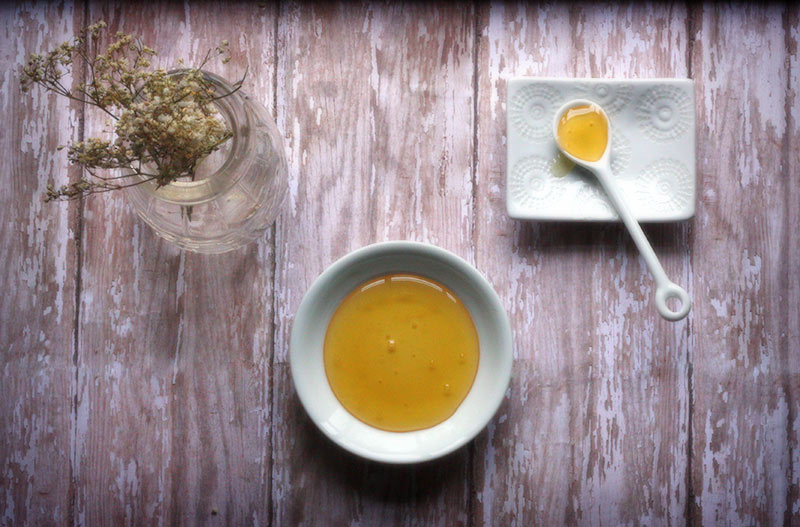
There are several medium-scale apiculture (beekeeping) farms in this area, plus many more “backyard” hives — plus rooftop installations in the most interesting places, most notably on the fifth floor of the Carew Tower in the heart of downtown; hives provide honey to several restaurants, including Cincinnati’s fine-dining powerhouse, Orchids at Palm Court. Everyone within driving distance of a farmers’ market (and we have a lot of them in Cincinnati) has access to fresh, raw, local honey.
We’re spoiled, I’d say, because we not only have an abundance of high-quality honey, but we also have a choice of flavors: honey takes on the characteristics of the flowers whose nectar and pollen the bees retrieve — bees living near clover or lavender or wildflowers or honeysuckle all produce uniquely flavor honey. Each apiary has its own unique combination of resident flowers, so, when the city’s honey production is viewed in whole, the flavor possibilities are endless.
Once you taste high-quality, local, unpasteurized honey you’re likely to wave goodbye to the odd, syrupy, grocery-store honey in the little bear bottles. As with everything mass-produced, there’s just no comparison.
Health benefits of raw (unpasteurized), high-quality honey [source]:
Why “raw?” Honey is a living food, full of enzymes, minerals, trace minerals, vitamins, proteins, carbohydrates, and organic acids. But in order to enjoy all of the health properties of honey, it’s important that honey never be heated above 140°F, which would destroy all of its beneficial enzymes. Pasteurization is a heating process specifically used to kill enzymes and microbes that spur the growth of harmful bacteria and extend shelf life — an unnecessary step for honey, because it is already strongly (and naturally) anti-microbial in its raw state. Consuming pasteurized honey has little more benefit than the other sugars we seek to avoid.
Raw honey:
- Has anti-bacterial, anti-viral, and anti-fungal properties. Due to its low water content, it’s a poor environment for the growth of harmful bacteria. (Honey is so efficiently anti-bacterial, in fact, that, when properly bottled and maintained, will last indefinitely without refrigeration.)
- Acts a cough suppressant and soothes a sore or scratchy throat.
- Boosts immunity, and protects against infections in wounds.
- May improve blood sugar control and insulin sensitivity.
- A salve made of honey has been proven effective when other topical antibiotics are not well tolerated. It can be applied to diabetic ulcers, eczema, canker sores or bleeding gums.
- Tea supplemented with ginger and honey, or apple cider vinegar and honey, can relieve the nausea of morning sickness.
- Contains phytonutrients, which have been shown to possess cancer-preventing and anti-tumor properties
- Honey from certain flower sources contain friendly bacteria that are good for digestion.
- Minor source of vitamins B2 and B6, copper, iron, manganese
- 64 calories per tablespoon
- Note: despite these benefits, honey should never be given to babies under 12 months.
I can personally attest to the sore throat relief. Earlier this winter, I shared my recipe for a soothing cold elixir, which features honey. Shortly after that post, I came down with my once-per-winter cold (conveniently during Christmas). The elixir was a huge help — it calmed my cough and throat irritation so I could get through the day (and sleep at night) without hacking away.
I do admit to a share of surprise — we’re so trained in our western culture to turn to pharmaceuticals to solve our health ills that we’ve forgotten how well Mother Nature is equipped to heal us. Honey honest-to-goodness works.
It’s not just about health…
But while substantial, the health benefits are not the only reason to purchase local, raw honey:
- You’re supporting a local business and their families, and by proxy, your own community at large. Your money goes in their pocket, which, in part, goes into the pockets of other local businesses and their families. (And perhaps back into yours, if you own or work for a local business yourself).
- You’re helping a beekeeper save and manage one of the most important and at-threat (see Colony Collapse Disorder below) ecosystems on the planet. Many crops that we depend on in our diet require insect pollination, of which the honey bee plays a starring role.
- With the rising popularity of beekeeping, many hive managers have taken to rescuing wild hives that find their way into residential buildings to set up shop. They relocate the hive, unharmed, to a safe, new home with an eager and caring keeper. It’s a win-win-win for unsuspecting homeowners, beekeepers, and bees alike. (If you find yourself with a honeybee infestation, consider calling a beekeeper or your local university extension service first before dialing up a poison-wielding exterminator.)
- Raw honey bottled and stored properly will never go bad. It’s an anaerobic substance, which means an absence of oxygen creates a poor environment for harmful bacterial growth.
Colony Collapse Disorder
Honey bee Colony Collapse Disorder (CCD) is the unexplained phenomenon of workers bees abandoning an active hive. Workers bees leave the hive, never to return, and without worker bees to replenish the nectar supply, the rest of the hive — the queen and immature bees — will eventually die. Beekeepers observing CCD report no signs of dead bees — they simply never return from their foraging flights.
Researchers are following up on a number of theories, including mite infestations or viruses, pesticide side effects, and hive relocation stress (resulting from humans moving a hive long distances).
Here’s a nice, simple summary of this rather complex, confounding situation, plus a list of crops where bees play a significant pollination role.
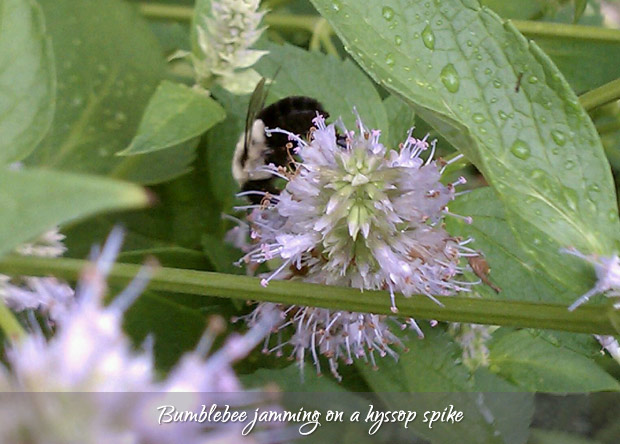
It’s heartbreaking. I’ve loved honey bees and bumblebees since my childhood, watching them hop from clover flower to clover flower in my parents’ yard. (All the kids in my neighborhood loved bees, in fact: by overwhelming majority, my classmates and I voted in our very first elementary school mascot and name, the Summit Stingers.)
Today, the only flowers I plant new in my yard — I’m a vegetable gardener, remember, not a flower gardener — are bee-friendly, and they’re all organically maintained. Bees love the flowers from oregano, thyme, mint, sage, lavender, basil, hyssop, bee balm, salvia, rudbeckia, and gaillardia — and many more — all of which live in my yard. New this year will be chamomile and calendula beds. The perennial hyssop returns each year, growing into a huge 3′ x 5′ bush with pretty blue spiky flowers next to my deck, and is positively covered in bees from July through October. I have two beds of oregano and lavender, front yard and back yard, and a 2′ x 3′ bed of thyme, all of which the bees adore.
My yard alone does not provide enough nectar and pollen to support an entire hive, but, together with the community garden next door to me, and the efforts of other flower-loving neighbors, hopefully, we’re helping the bee population in some meaningful way.
» More info on CCD.
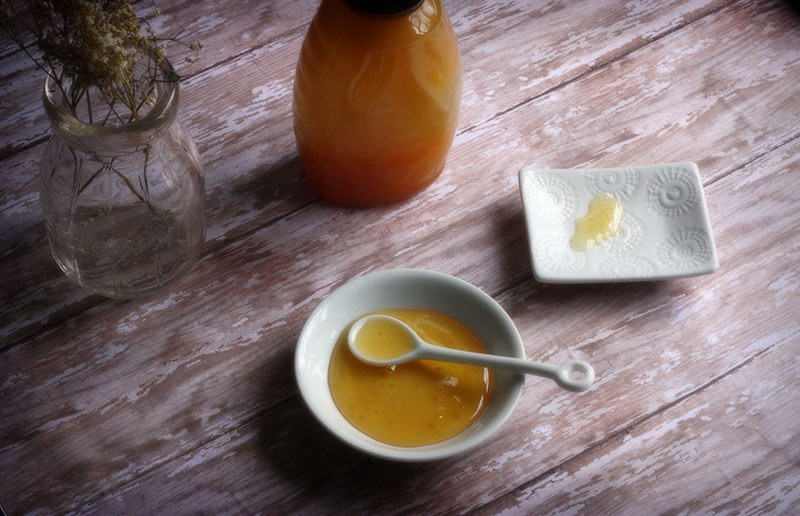
Every day uses for honey:
- Use in sauces and salad dressings in place of sugar.
- Baked goods requiring small amounts of sugar can be substituted with honey (remember, sugar is counted as a liquid in baking recipes. You may need to rebalance the dry ingredients a bit, or use less than a 1:1 ratio of honey to sugar).
- Drizzle honey over toast, scones or biscuits.
- Use in tea, in place of refined sugars or artificial sweeteners. (Let the tea cool a bit first, so as to not destroy honey’s health benefits which break down above 140°F)
- My favorite cold and scratchy throat remedy.
Handling and storage tips:
- Always use clean, sanitized utensils when dipping into a jar of honey, which keeps harmful microbes out of the jar. (Better yet, use a squeeze bottle to dispense only what you need.)
- Store the bottle in a cool (not cold), dry place.
- Refrigeration is not necessary. In fact, when cold, the sugars in honey will crystallize and turn the liquid cloudy. There’s no harm done, but you’ll need to “thaw” the honey before using it in a recipe: set the jar in a warm water bath until the crystals have dissolved (don’t use water with a temperature over 140°F, or you’ll risk cooking off all of the honey’s beneficial properties).
A side note: I debated whether to include the following personal anecdote or not, for reasons I’ll explain at the end but, I think I’ll put it out there, and you very smart readers can decide for yourself whether it has any potential for validity.
The winter and spring of 2012 was incredibly warm for most of the U.S., including Ohio. I believe we had just one significant snowfall, and the number of days spent in the single digits could be counted on one hand. Warm. Super warm. Spring came early — late February — and stayed until June.
As a gardener, I crave spring and the chance to get back out in the dirt. But as a seasonal allergy sufferer, I also dread the months of April and May, when the yard comes to life and shakes its pollen into the wind. Flowering bushes — and there are many in my little ecosystem, both in my yard and the neighbor’s — are the primary sources of my allergies. When I leave in the morning, a thin layer of yellow-green powder coating my car tells me it will be a bad day, and that I had better run back in for anti-histamines, or pay the consequences all day long.
Once the source of the yellow-green powder cuts it the heck out — and I have yet to identify the culprit; it might be the forsythia in my neighbor’s yard or the very abundant honeysuckle in mine — I feel much, much better. There are other small aggravators here and there, but by mid-May, the allergies are gone.
Last year was different, however. No allergy symptoms. At all. I didn’t even realize it until well into the summer, when I came across the previous season’s box of Zyrtec, and remembered that I hadn’t purchased a new box for the spring.
It wasn’t until the fall of 2012 that I read an article about the effects of local honey, including a proclaimed ability to relieve seasonal allergies, under the theory that by consuming local honey, you’re ingesting small amounts of pollen allergens gathered by bees, and you eventually build a resistance to it.
Sometime in 2011, I had begun making homemade salad dressings using raw, local honey (as you can tell by this site, I eat a lot of salads, and they’re always drizzled with homemade dressings or vinaigrettes). I also began using honey as a replacement for sugar in other recipes. So, by the time the spring of 2012 arrived, I had a good six months of regular, local, raw honey consumption under my belt.
Was the honey responsible for tamping down the allergic reactions last year? I don’t know. Research is all over the map, some sources saying, yes, it does help; others claiming, no way it possibly could (source). Time will tell. My consumption of local, raw honey continues to be consistent, so I’m eager to see what transpires this spring.
And I can tell you, it would be so cool if it did. While the anti-histamines help a lot, they don’t eliminate one embarrassing problem: my eyes. Even anti-histamine’d to the hilt, I can’t touch the skin around my eyes during an attack. One little rub — just one swipe across an eyelid — makes the whole works puff up like golf balls and water relentlessly.
The mere sight of me causes mothers to reflexively pull their children close to them. It ain’t pretty, folks.
If local honey spares me — and the community — of that, I’ll take it!

Comments:
Comments are closed.






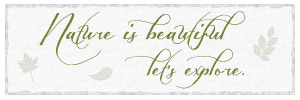

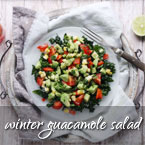



What a wonderful post! I started using local honey last year and I was absolutely dazzled by all the flavors and varieties. I start every day with a little bit in my tea. I also use manuka honey (which is definitely not local!) as a spot treatment for breakouts. It’s a little bit messy, but it works.
I too know about the purported benefits of raw local honey, and have been consuming it (probably not often enough, need to step it up).Hopefully come the next spring I’ll be free and clear from the darn pollen allergies. We’ll see!
I am using local honey for the first time this year and my allergies are practically nonexistent. While all around me were hacking, wheezing and sniffling, for the first time in years I’ve not had to take a single Zyrtec. It works!
This is my second year with local honey – no allergy symptoms at all. Spring was pretty bad, and lots of folks had a hard time of it. Me, no itchy eyes, no tickley throat, no stuffed up head – nothing.
Either I coincidentally outgrew my seasonal allergies last year, or there really is something to the honey. I’m convinced: I won’t be taking any chances.